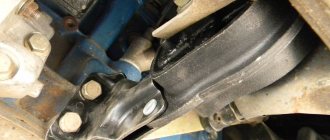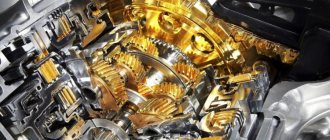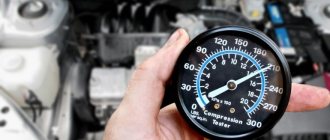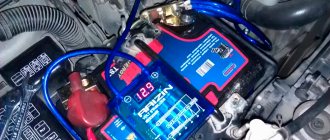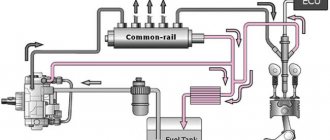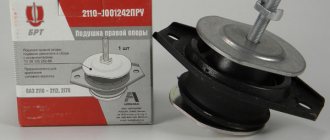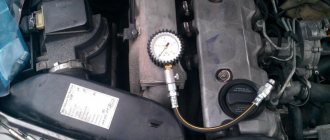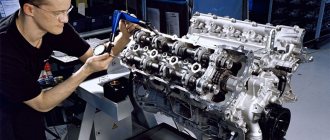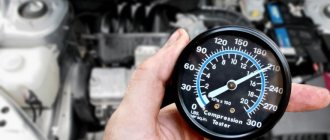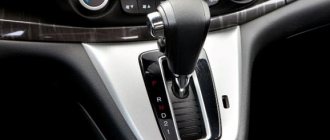Surely every car enthusiast, when driving on the highway or overtaking another car, thought: oh, if only the power unit of a racing car were on the “swallow”. Today there are many options on how to achieve the desired result in terms of engine power and throttle response. The problem is solved using both partial and complex methods.
Along with the usual boosting of the unit, the implementation of which comes down to replacing the standard equipment for the intake and exhaust of gases, pistons, camshaft and other mechanisms, they use turbines for an atmospheric engine. The work leads to the desired result, however, the distinctive feature is the laboriousness of the process, high cost and ambiguous results.
Another method of changing the characteristics of a car is an engine swap. The technology avoids some of the disadvantages inherent in other processes. However, there are shortcomings, let's try to figure it out.
Toyota Altezza with 2JZ-FSE swap engine installed:
What is an engine swap
In order to improve a standard car engine, a large amount of complex work needs to be done, so swapping and chip tuning are not done by people without experience.
Swap is a replacement, translated from English. swap (swap engine - replacement of internal combustion engines). That is, it is already clear that this means replacing the power motor as a whole. A more powerful internal combustion engine is installed on a car or other technical transport equipment.
There is a type of swap in which the engine is replaced with the same one (with the same technical characteristics). This is done in order to avoid major repairs of the internal combustion engine.
A swap is also carried out for the transmission unit of the car. Also, either due to failure of the standard transmission, or to improve performance.
If the engine is changed to a more powerful one, then the gearbox is also changed to one that will withstand the developed power. If the standard transmission was an automatic transmission, then when installing an internal combustion engine on a more powerful one, the automatic transmission is replaced with a mechanical one, which is more durable.
Difficulties of the procedure
Despite the seemingly simple operation, engine swap brings some difficulties to the owner. Depends on what the final goal is pursued by the car enthusiast. If the operation is carried out by replacing the unit with a similar engine, no difficulties arise. But, as a rule, most of the work is aimed at increasing the power and performance of the engine, and that’s another conversation.
In order to increase torque and power, they install an engine whose dimensions hardly fit into its standard place. Therefore, a lot of work is being carried out to re-equip the car, strengthen the body, gearbox, change the electrical system, and so on.
The issue that needs to be resolved is the weight of the new motor. Powerful units are usually heavier than standard engines. Additional weight will require changes to the vehicle's mounts, suspension, and steering. Improperly calculated weight distribution will make the vehicle difficult to control. In addition, the unit will increase the load on the brakes, which will lead to wear and failure.
From time to time, there are options for replacing outdated units with technologically advanced, economical, but difficult to implement. Such a replacement will entail a reconfiguration of the electronics, and possibly the installation of new electronic systems, sensors, and units.
Although a swap is not a full-fledged tuning, the process entails modifications and changes in the design of the vehicle. An exception is replacing the engine with a similar unit. The work requires responsibility and professionalism, as it poses a danger when a car drives onto a public road.
Lada Niva car with 2JZ engine installed:
Pros and cons of a swapped engine
In pursuit of increasing the power of the internal combustion engine, you must be prepared for some difficulties. More often, a more powerful motor has larger overall dimensions. Therefore, in some cases, it is necessary to expand the space under the hood and carry out many operations to transfer some devices and locate them in other places.
In addition, the greater the power of the internal combustion engine, the greater its weight. Therefore, it will be necessary to strengthen the suspension and the structure of the car as a whole.
A vehicle's weight distribution can change its handling dynamics. It is especially important, when increasing the power of the unit, to replace the brakes with more powerful ones. The brakes must be stronger than the power of the power unit. Either the electronic control unit (ECU), sensors, or wiring are sent for replacement.
You can change the engine the other way around, from a powerful one to a less powerful and economical one. In this case, strengthening the suspension, brakes and replacing other devices is not required.
Installing a turbocharger or swap to a more powerful engine, boosting the engine - all this requires strengthening the structure and high-quality testing of all parts.
When to resort to engine swap
Replacing an engine is not always the result of a vital necessity, but if your engine is in poor condition and you are already tired of repairing or replacing its systems and components, then this is the time to stop and think carefully about whether to completely replace it. In such cases, we are not talking about improving the “native” characteristics. Moreover, sometimes, in order to save money, as well as with an eye to reducing fuel consumption, a swap is made for a less productive unit. In such cases, you should understand that if you install a lower-power motor from the same line, this is one thing, if a completely different engine is another. In the first case, you minimize both the amount of work and the procedure for legalizing a new engine. Making a swap of a non-original engine is a much more responsible step, since in this case you will need to calculate in advance all the possible pros and especially cons, of which there will also be many.
Drivers participating in auto racing, even in the amateur class, change the engine quite consciously. As a rule, racing drivers sooner or later come to the understanding that you can’t go far with a standard power unit. To improve results, you either need to purchase a new, more powerful car, which for obvious reasons is unacceptable in most cases, or swap the engine. The second option can also be either simple, when only a slightly more powerful motor is installed, which also ideally matches the geometric dimensions and compatibility with other car systems, or extremely complex. In the latter case, a obviously very productive power unit is selected for replacement, the installation of which may require changing the structural elements of the car itself, from installing another box to using special fasteners that allow the operation of a more massive engine with a different geometry of seats and interface areas with other components.
Finally, we cannot fail to mention the engine swap for the purpose of car participation in exhibition activities. Typically, the owners of such vehicles do not use them very actively, being a kind of automotive aesthetes
It is important for them to demonstrate to the whole world that their car has no analogues, and as for improving the characteristics of the vehicle, this is a secondary task
How to register a modified engine
If the owner of a vehicle makes changes to the engine or changes the shape and color of the body, he must register all changes made.
It has long been abolished to check the engine during technical inspection, but if the characteristics of the swapped engine have changed, then it must be registered with the MREO.
If you do everything according to your mind, then the correct order is this:
- Even before replacing the engine, submit an application for replacing the internal combustion engine of the vehicle to the registration authorities. Provide them with a technical passport.
- They may require a certificate from a car service station stating that the motor was purchased legally.
- Prove that the car design is suitable for the new engine.
- Go through an examination and receive a document stating that the new internal combustion engine is suitable.
- After all the work has been completed, come to the traffic police and register, showing the car.
If, when submitting an application, it is determined that the new powerful engine will create a danger for the driver and passengers, then permission to change the power unit will not be issued.
Swipe to Instagram
Swiping across the screen is most actively used when working with Instagram. Every user of this social network should know how it works. There are several swipe functions that will make working with the application easier and faster:
- Gesture from left to right. Launches the Stories window for adding content and publishing it.
- Gesture from top to bottom and vice versa. Allows you to open the phone Gallery to publish content and close it.
- Gestures under the menu to switch the shooting mode if it is carried out directly in the application.
- Gestures after taking photos to apply various filters.
- Swipe up in History to see who has viewed the material.
Recommendations
At first glance, increasing the power of a car with a swap is an easy and convenient option. But, it is easier and simpler to install a turbocharger (turbine) on your power unit, if possible.
A change as minor as installing turbocharging is usually not checked.
Japanese JZ series engines (1JZ-GE, 1JZ-GTE, 2JZ-GE, 2JZ-GTE) are great for upgrading your car. They are often installed on BMWs, etc.
Video
In this video, the inspector talks about car swiping and registration measures.
Swap UAZ Patriot.
Swap Niva 4x4.
The difference is SWAPP or TUNING.
Engine swap. How to easily modify an engine.
Surely every car enthusiast, when driving on the highway or overtaking another car, thought: oh, if only the power unit of a racing car were on the “swallow”. Today there are many options on how to achieve the desired result in terms of engine power and throttle response. The problem is solved using both partial and complex methods.
Along with the usual boosting of the unit, the implementation of which comes down to replacing the standard equipment for the intake and exhaust of gases, pistons, camshaft and other mechanisms, they use turbines for an atmospheric engine. The work leads to the desired result, however, the distinctive feature is the laboriousness of the process, high cost and ambiguous results.
Another method of changing the characteristics of a car is an engine swap. The technology avoids some of the disadvantages inherent in other processes. However, there are shortcomings, let's try to figure it out.
Toyota Altezza with 2JZ-FSE swap engine installed:
Conclusion
If you do an internal combustion engine swap, the control can change greatly. Therefore, after all repair work, it must be tested with caution, on empty streets or in the forest.
Increase in power up to 15 hp. will not greatly affect the driving dynamics of the car. But, an increase in power from 30 hp. will lead to a change in the car’s handling and to wear of the components associated with the internal combustion engine (box, suspension, etc.). And if the car has an automatic transmission, it will be difficult to follow the driving rules if the engine power is greatly increased, because an automatic transmission was installed from the factory for a lower-power engine.
Another important point: if the car is very old, the suspension and body are “shaky” (rotten), then it is not recommended to install a more powerful engine than it was.
My personal opinion: I would not do such an amount of work for a swap, but would sell this car and buy a more powerful one if necessary.
Checking engine number
First of all, it is important to understand that installing a so-called “non-standard” engine is an independent modification of the vehicle. Naturally, after such a replacement of the engine for tuning the car, registration of the vehicle may be refused on completely legal grounds
Simply put, with a new engine, which is usually deliberately selected more powerful than the standard one, a number of the most important technical characteristics of the car also change. At the same time, such vehicles and their systems must be specially modified, otherwise it will not be possible to register and drive this vehicle on public roads.
It’s another matter if the motor was replaced with an absolutely similar one, that is, no changes to the standard factory design occurred. The only controversial point will be a different power unit number. Now let's move on to the problem itself.
In 2011, Order No. 28 of the Ministry of Internal Affairs of the Russian Federation was issued. Without going into details, the said order contained changes that provided for the elimination of the need to check the engine number when registering a car. Then in 2013, Order No. 605 of the Ministry of Internal Affairs of the Russian Federation was issued, which approved the new Administrative Regulations of the Ministry of Internal Affairs of the Russian Federation for the provision of state registration services for vehicles.
So, the new order no longer contains any indication that the engine number does not need to be verified, and the discrepancy between the numbered units and the submitted documents serves as a basis for refusal of registration. It turns out that the situation is twofold. On the one hand, the first order allowed replacing the engine with exactly the same unit, but then the second order prohibited this.
As a result, from 2011 to 2013, all cars in which the internal combustion engine was replaced could not be registered, that is, officially registered. So, if you purchase a used car on which the engine has been replaced, but there are no corresponding marks in the title, difficulties arise. What makes the situation even worse is the fact that the requirements differ from one area to another.
In practice it looks like this. In one region of the Russian Federation, the State Traffic Safety Inspectorate does not see any problem when registering a vehicle with a replaced engine (provided that the replacement was made with the same engine). Accordingly, no marks are placed on the PTS, no additional documents are required, and the mismatched engine number does not affect the state registration procedure for the vehicle.
However, if you contact the traffic police in another region to re-register a vehicle, you may receive a refusal due to an engine replacement. Employees refer to clause 24 of the administrative regulations (Appendix No. 1 to Order No. 605). It is also noteworthy that in many cases the engine number is not indicated in the valid vehicle registration certificate; also in the registration application, the vehicle information section also does not have a column for indicating the engine number (only the engine power is indicated).
An equally difficult situation is when the engine is replaced, but the engine number in the vehicle title is different. It would seem that it is enough to write an application to the traffic police so that the corresponding changes are made to the PTS in the form of a new engine number. In practice, this is possible, but for such actions it is necessary to provide documents for the new engine.
In other words, the legality of purchasing a donor motor must be documented. If there are no such documents, then it will not be possible to change the number of the power unit in the PTS, and based on the mismatch of the number, further registration of the vehicle will be denied.
Let us also add that the statements of many owners that during registration the expert did not look at the engine number and the car was registered does not mean that this happens in 100% of cases. Yes, on modern cars it is not always easy to get to the number plate; sometimes you have to remove some of the attachments, etc.
If you consider that the vehicle owner is not required to do this on his own, and the expert simply does not want to do such work, then it is understandable how cars are registered without checking the engine number.
However, you cannot rely solely on luck. On many cars there is no need to disassemble anything, that is, checking the engine number is not difficult. In simple words, if in one region the power plant number is not checked, in another there may well be difficulties; in one car it is easy to get to the number, in another it is difficult to access the number panel.
History of the engine swap
Some believe that installing a more powerful power unit, which is different from the one that was originally installed on the car at the factory, is a modern round of evolution in the field of car tuning. In fact, engine replacement has been practiced for a long time. For example, with the introduction of Prohibition in the United States in the 30s, more powerful internal combustion engines began to be installed on cars that delivered illegal alcohol.
This was done in order to be able to evade police pursuit if necessary. Then in the 50s, hot-rod cars came into fashion, which were an old car with a powerful modern engine and a package of serious modifications to the chassis, etc.
This fashion subsequently spread throughout the world, while for car enthusiasts from the USA and a number of other countries, no special problems arise, since the main task is only to correctly install the new engine, which then does not need to be separately registered.
As for Europe, Japan, CIS countries, etc., engine swap is not limited to just replacing the power plant. If the engine has been replaced, registration of such replacement is a mandatory procedure. This is the only way to be able to fully use the car legally. At the same time, replacing the engine with a more powerful one, of course, is not as common as in the USA, but it is still very popular among car enthusiasts.
Replacing the motor
Most often in automotive practice it is engine replacement, or engine swap. Basically, this procedure is performed not so much with the goal of replacing an outdated, worn-out engine, but with the goal of increasing the power of the car. To accomplish this task, a new motor is installed that is slightly more powerful than the old one. However, what is swap in this case? Everyone who resorts to this procedure sets themselves certain tasks, among which are often:
- Replacement due to wear and tear of the old engine. Often, during operation, the old one becomes unusable, and the only correct decision on the part of the driver is to completely replace it. Sometimes you can save a lot on this if you install a less greedy engine that will consume less fuel.
- Often, those who use their car in various kinds of sporting events resort to replacing the engine. Using this procedure, you can significantly improve your results on sports tracks.
- Exhibition enthusiasts also trade in engine replacements, often using even larger models for relatively small cars. Such a procedure is more of an aesthetic excess than a necessity.

